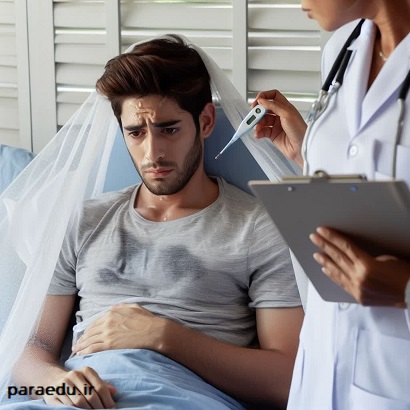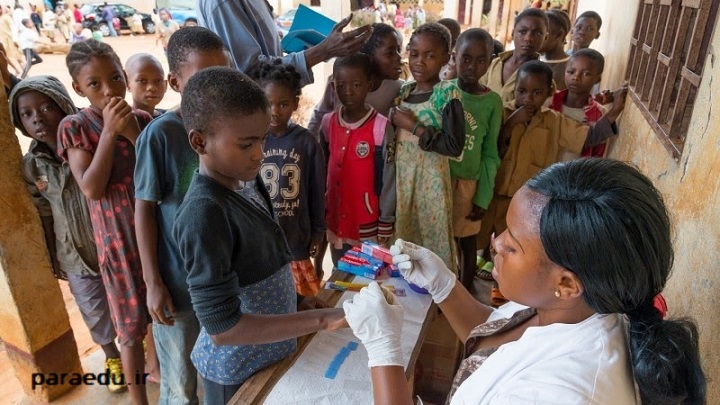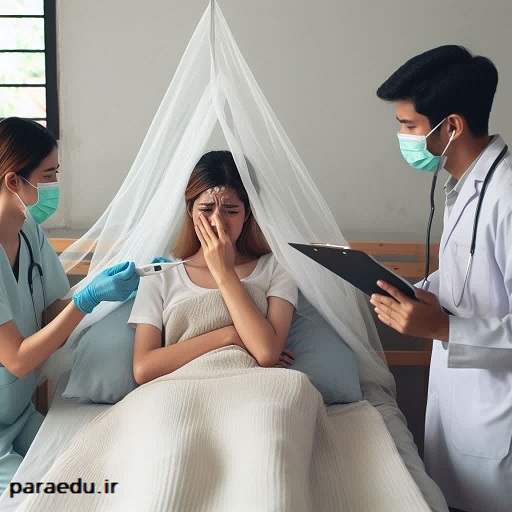Malaria is a serious and sometimes fatal disease that affects millions of people around the world. It is caused by a parasite called Plasmodium, which infects the red blood cells of humans and other animals. In this article, we will explain what plasmodium is, how it is transmitted, what are its symptoms, how it is diagnosed and treated, and how it can be prevented.
What is Plasmodium?
Plasmodium is a genus of unicellular eukaryotes that belong to the phylum Apicomplexa, a large group of parasitic organisms. Plasmodium has a complex life cycle that involves two hosts: a blood-feeding insect (usually a mosquito) and a vertebrate (such as a reptile, a bird, or a mammal).
There are over 200 species of plasmodium, but only five of them cause malaria in humans: P. falciparum, P. vivax, P. malariae, P. ovale, and P. knowlesi. Each species has different characteristics, such as the geographic distribution, the severity of the disease, the duration of the infection, and the resistance to drugs.
How is Plasmodium Transmitted?
Plasmodium is transmitted through the bite of an infected female mosquito of the genus Anopheles. When the mosquito bites a person who has malaria, it picks up some of the parasites from their blood. The parasites then develop and multiply in the mosquito’s gut and salivary glands. When the mosquito bites another person, it injects some of the parasites into their bloodstream.
The parasites then travel to the liver, where they invade and multiply in some of the liver cells. After a period of time (which varies depending on the species), some of the parasites leave the liver and enter the bloodstream again, where they infect and destroy red blood cells. This causes the symptoms of malaria, such as fever, chills, headache, anemia, and organ damage.
Some of the parasites in the blood can also develop into sexual forms called gametocytes, which can be taken up by another mosquito when it bites an infected person. The gametocytes then fuse and form new parasites called sporozoites in the mosquito’s gut. The sporozoites then migrate to the salivary glands, completing the cycle and making the mosquito infectious to another person.

What are the Symptoms of Plasmodium Infection?
The symptoms of plasmodium infection depend on several factors, such as the species of plasmodium, the number of parasites in the blood, the immune status of the person, and any co-existing conditions or complications. However, some common symptoms include:
- Fever: This is usually the first and most prominent symptom of malaria. The fever typically follows a pattern of periodic episodes that coincide with the rupture of red blood cells by the parasites. The fever may be accompanied by chills, sweating, shivering, and body aches.
- Headache: This is another common symptom that may be severe and persistent.
- Anemia: This is a condition where there is a low number of red blood cells or hemoglobin in the blood. This can cause weakness, fatigue, pale skin, shortness of breath, and dizziness.
- Jaundice: This is a condition where there is a high level of bilirubin in the blood or tissues. Bilirubin is a yellow pigment that results from the breakdown of red blood cells by the parasites or by the liver. This can cause yellowing of the skin and eyes.
- Splenomegaly: This is an enlargement of the spleen, an organ that filters and stores blood cells and helps fight infections. The spleen may become enlarged due to increased activity or congestion caused by malaria.
- Organ failure: In severe cases of malaria, especially caused by P. falciparum, some organs may fail due to damage or dysfunction caused by the parasites or by complications such as severe anemia or cerebral malaria (a condition where parasites block blood vessels in
the brain). The organs that may be affected include the kidneys, lungs, liver, heart, and brain.
The symptoms of plasmodium infection usually appear between 10 and 15 days after being bitten by an infected mosquito. However, some species of plasmodium can remain dormant in
the liver for months or years before causing symptoms. This is called latent or relapsing malaria.
How is Plasmodium Diagnosed?
The diagnosis of plasmodium infection is based on clinical signs and symptoms, travel history (to areas where malaria is endemic), and laboratory tests.
The most definitive way to diagnose plasmodium infection is to examine a blood sample under a microscope and look for the parasites or their products. This can be done by using a thick or thin blood smear, which is a drop of blood that is spread on a glass slide and stained with a dye that makes the parasites visible. The blood smear can also help identify the species and the stage of plasmodium.
Other laboratory tests that can help diagnose plasmodium infection include:
- Rapid diagnostic tests (RDTs): These are simple and quick tests that can detect antigens (proteins) produced by the parasites in the blood. They can be done by using a finger-prick blood sample and a test strip or device that shows a positive or negative result. RDTs can also help identify the species of plasmodium. However, they may not be very sensitive or specific, and they may not detect low levels of parasites or mixed infections.
- Polymerase chain reaction (PCR): This is a molecular test that can detect the DNA of the parasites in the blood. It can be very sensitive and specific, and it can also help identify the species and the strain of plasmodium. However, it may not be widely available or affordable, and it may take longer to get the results.
- Serology: This is a test that can detect antibodies (immune proteins) produced by the person in response to the parasites in the blood. It can indicate past or current infection, but it cannot distinguish between them. It can also help identify the species of plasmodium. However, it may not be very sensitive or specific, and it may not detect early or low-level infections.
How is Plasmodium Treated?
The treatment of plasmodium infection depends on several factors, such as the species of plasmodium, the severity of the disease, the drug resistance status of the parasites, the availability and affordability of drugs, and the presence of any co-existing conditions or complications.
The main goal of treatment is to kill all the parasites in the blood and prevent complications or death. The main drugs used to treat plasmodium infection are antimalarial drugs, which are classified into different groups based on their chemical structure and mode of action.
Some of the most commonly used antimalarial drugs include:
- Chloroquine: This is an old and cheap drug that belongs to the 4-aminoquinoline group. It works by interfering with the digestion of hemoglobin by the parasites. It is effective against most species of plasmodium, except P. falciparum, which has developed widespread resistance to it.
- Artemisinin-based combination therapy (ACT): This is a combination of two or more drugs that belong to different groups, one of which is artemisinin or its derivatives. Artemisinin is a natural compound derived from a plant called sweet wormwood. It works by producing free radicals that damage the parasites. ACT is effective against all species of plasmodium, including P.falciparum, which has developed resistance to many other drugs.
- Quinine: This is another old and natural drug derived from a plant called cinchona. It works by interfering with the metabolism of the parasites. It is effective against all species of plasmodium, but it has many side effects and interactions with other drugs.
- Mefloquine: This is a synthetic drug that belongs to the 4-quinolinemethanol group. It works by interfering with the membrane function of the parasites. It is effective against P.falciparum and P.vivax, but it has many side effects and contraindications.
- Doxycycline: This is an antibiotic that belongs to the tetracycline group. It works by inhibiting
the protein synthesis of the parasites. It is effective against all species of plasmodium, but it has many side effects and interactions with other drugs.
The choice and duration of antimalarial treatment depend on several factors, such as the species of plasmodium, the drug resistance status of the parasites, the availability and affordability of drugs, and the presence of any co-existing conditions or complications.
Some general guidelines for antimalarial treatment are:
- For uncomplicated P. falciparum infection (no signs of severe disease or organ failure), ACT is recommended as first-line treatment for at least three days.
- For uncomplicated P. vivax or P. ovale infection (no signs of severe disease or organ failure), chloroquine or ACT is recommended as first-line treatment for at least three days, followed by primaquine for 14 days to kill the dormant liver stages (hypnozoites) and prevent relapse.
- For uncomplicated P. malariae infection (no signs of severe disease or organ failure), chloroquine or ACT is recommended as first-line treatment for at least Komeil Mj, [28.10.23 05:32]three days. No primaquine is needed, as P. malariae does not have dormant liver stages.
- For severe or complicated malaria (signs of severe disease or organ failure, such as impaired consciousness, seizures, respiratory distress, jaundice, renal failure, bleeding, shock, etc.), intravenous or intramuscular artesunate is recommended as first-line treatment for at least 24 hours, followed by oral ACT for at least three days. Alternatively, intravenous or intramuscular quinine can be used if artesunate is not available.
- For pregnant women with malaria, the choice and duration of antimalarial treatment depend on the trimester of pregnancy, the species of plasmodium, and the drug resistance status of the parasites. Generally, ACT is recommended as first-line treatment for P. falciparum infection in the second and third trimesters, and quinine plus clindamycin is recommended in the first trimester. For P. vivax or P. ovale infection, chloroquine is recommended as first-line treatment in all trimesters, followed by primaquine after delivery. For P. malariae infection, chloroquine is recommended as first-line treatment in all trimesters.
Antimalarial treatment should be given under medical supervision and with regular monitoring of clinical and laboratory parameters. The response to treatment should be assessed by measuring the parasite density in the blood before and after treatment. If the parasite density does not decrease by 75% within 48 hours or if the symptoms do not improve within 72 hours, it may indicate treatment failure or drug resistance. In such cases, a different antimalarial regimen should be used.
How Can Plasmodium Infection Be Prevented?
The prevention of plasmodium infection can be achieved by reducing the exposure to mosquito bites and by taking prophylactic drugs.
Some of the measures to reduce the exposure to mosquito bites include:
- Using insecticide-treated bed nets (ITNs) or long-lasting insecticidal nets (LLINs) to sleep under at night.
- Wearing long-sleeved clothes and trousers that cover most of the body.
- Applying insect repellents that contain DEET, picaridin, IR3535, or PMD on exposed skin.
- Spraying indoor residual insecticides (IRS) on walls and ceilings where mosquitoes rest.
- Eliminating or treating potential mosquito breeding sites, such as stagnant water, containers, tires, etc.
Some of the drugs that can be taken to prevent plasmodium infection include:
- Chemoprophylaxis: This is the use of antimalarial drugs to prevent malaria in people who travel to or live in areas where malaria is endemic. The choice and duration of chemoprophylaxis depend on several factors, such as the destination, the duration of stay, the risk of exposure, the species and drug resistance status of plasmodium, the availability and affordability of drugs, and the presence of any co-existing conditions or contraindications. Some of the most commonly used drugs for chemoprophylaxis include chloroquine, mefloquine, doxycycline, atovaquone-proguanil, and primaquine.
- Intermittent preventive treatment (IPT): This is the use of antimalarial drugs to prevent malaria in specific groups of people who are at high risk of malaria, such as pregnant women (IPTp), infants (IPTi), and children (IPTc). The choice and duration of IPT depend on several factors, such as the epidemiology of malaria, the drug resistance status of plasmodium, the availability and affordability of drugs, and the presence of any co-existing conditions or contraindications. Some of the most commonly used drugs for IPT include sulfadoxine-pyrimethamine (SP), mefloquine, and dihydroartemisinin-piperaquine (DHA-PQ).
The use of preventive drugs should be done under medical supervision and with regular monitoring of clinical and laboratory parameters. The effectiveness of preventive drugs should be assessed by measuring the incidence and prevalence of malaria in the target population. If there is evidence of drug resistance or adverse effects, a different preventive regimen should be used.
Conclusion
Plasmodium is a parasite that causes malaria in humans and other animals. It has a complex life cycle that involves two hosts: a mosquito and a vertebrate. There are five species of plasmodium that cause malaria in humans: P. falciparum, P. vivax, P. malariae, P. ovale, and P. knowlesi.
The symptoms of plasmodium infection vary depending on several factors, such as the species of plasmodium, the number of parasites in the blood, the immune status of the person, and any co-existing conditions or complications.
However, some common symptoms include fever, headache, anemia, jaundice, splenomegaly, and organ failure.
The diagnosis of plasmodium infection is based on clinical signs and symptoms, travel history, and laboratory tests. The most definitive way to diagnose plasmodium infection is to examine a blood sample under a microscope and look for the parasites or their products. Other laboratory tests that can help diagnose plasmodium infection include rapid diagnostic tests, polymerase chain reaction, and serology.
The treatment of plasmodium infection depends on several factors, such as the species of plasmodium, the severity of the disease, the drug resistance status of the parasites, the availability and affordability of drugs, and the presence of any co-existing conditions or complications. The main goal of treatment is to kill all the parasites in the blood and prevent complications or death. The main drugs used to treat plasmodium infection are antimalarial drugs, which are classified into different groups based on their chemical structure and mode of action. Some of the most commonly used antimalarial drugs include chloroquine, artemisinin-based combination therapy, quinine, mefloquine, and doxycycline.
The prevention of plasmodium infection can be achieved by reducing exposure to mosquito bites and by taking prophylactic drugs. Some of the measures to reduce exposure to mosquito bites include using insecticide-treated bed nets, wearing long-sleeved clothes and trousers, applying insect repellents, spraying indoor residual insecticides, and eliminating or treating potential mosquito breeding sites. Some of the drugs that can be taken to prevent plasmodium infection include chemoprophylaxis and intermittent preventive treatment.
Plasmodium is a serious and sometimes fatal parasite that causes malaria in humans and other animals. It is important to be aware of its transmission, symptoms, diagnosis, treatment, and prevention, especially for people who travel to or live in areas where malaria is endemic. By taking appropriate measures, plasmodium infection can be prevented or treated effectively and safely.
 انگل شناسی پزشکی Medical Parasitology
انگل شناسی پزشکی Medical Parasitology


